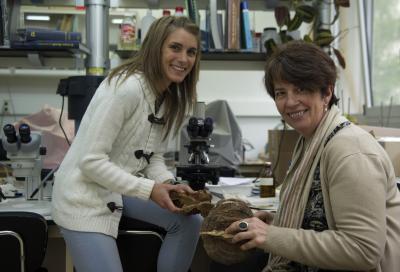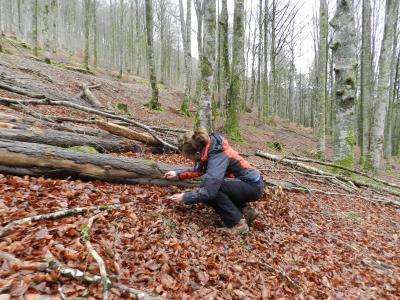In California, there are runaway wildfires because no one is allowed to take a machine into the woods and clear dead trees. Other countries have the opposite problem; a shortage of dead wood in forests results because fallen branches and trees are cleared away too often.
Our one-size-fits-all federal management policy often hurts the environment under the guise of trying to help. Biologists working in Navarre note that dead wood ought to be decomposing, as it is the habitat of many living beings like lignicolous fungi. These fungi are capable of decomposing dead wood and turning it into organic and inorganic matter. Clearing away the dead wood from the forests is ecologically harmful for the fungi.
Nerea Abrego-Antia and Isabel Salcedo-Larralde, biologists in the Department of Plant Biology and Ecology of the UPV/EHU-University of the Basque Country, quantified this effect on fungi populations that live off dead wood in various beech groves in Navarre. Their conclusion is that forestry and classical forest management are harming the community of saproxylic fungi. What is more, the researchers have discovered that in the forests being exploited various fungi species are disappearing and in some cases even whole families are affected.
Isabel Salcedo, director of the research, said, "You see everything very clearly, but you don't accept it that easily. The pre-hypothesis could be that as the basic matter is lost, the environment will be directly affected. But the aim of our work is to prove it. In forestry only recently did they start to notice this phenomenon, while in Europe it began to be proven scientifically about ten years ago."

On the left, Nerea Abrego-Antia, and on the right, the head of the research, Isabel Salcedo-Larralde, from the UPV/EHU's Mycology Team. Credit: UPV/EHU
The analysis was carried out on samples from sixteen zones, of which eight are exploited and the other eight are not. After the samples had been gathered, they were classified in accordance with a standard criterion that is used by mycologists in this field so that the research can be repeated. "The first main variable to do the classifications was the size of the wood remains in the debris. They are classified according to three sizes, from the largest to the smallest," explained Salcedo. "Normally, the smallest debris in this classification is not analysed. Yet many fungi have to be identified under the microscope, although there are known species that are very large, like the tinder fungus Fomes fomentarius. But it is more difficult to gather samples of the rest and identify them, and it takes longer."
After the classification of the wood in terms of size, the next criterion is the level of decomposition. For each size three levels of decomposition were established: the recently fallen, the ones that have begun to decompose and the ones that are fully decomposed. "A more precise classification could have been made, but we found that the levels of decomposition fitted well into the three groups." The debris analysed was classified into nine groups.
After classifying the debris, the fungal species existing in each were identified, in other words, the community of fungi existing in each twig. As far as possible, the "quantity" of each species is also established, even though this is no easy task. As Salcedo pointed out, this last parameter is difficult to apply.

Nerea Abrego-Antia, researcher in the UPV/EHU's Mycology Team. Credit: UPV/EHU
The other European studies have concentrated on large-sized woody debris, which is why importance has been attached to the volume of dead wood in the forests when it comes to preserving them. However, according to the research by Salcedo and Abrego, the factor that exerts the most influence on the diversity of saproxylic fungi is the diversity of the woody debris, not the volume of wood, in other words, that the nine groups classified should appear the maximum possible number of times. "This conclusion is a result very much to be taken into consideration in forest management," stressed Salcedo.
At the same time the influence exerted by forest fragmentation on the presence of fungi is also being analyzed. Based on this research, the growth of the edge or intervening matrix which happens as a result of forest fragmentation also has a negative effect on their diversity.
The main conclusion of the study is that forestry and classical forest management are harming the community of saproxylic fungi, at least in the zones studied.
Citation: N. Abrego, I. Salcedo, 'Variety of woody debris as the factor influencing wood-inhabiting fungal richness and assemblages: Is it a question of quantity or quality?' Forest Ecology and Management, Volume 291, 1 March 2013, Pages 377-385 DOI: 10.1016/j.foreco.2012.11.025,





Comments